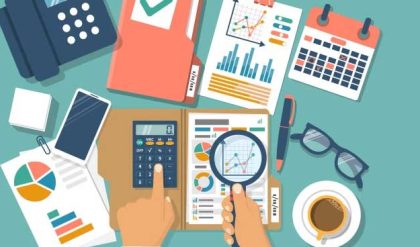An economic growth rate is a measure of economic growth from one period to another using percentage terms. This measure does not adjust for inflation; it is expressed in nominal terms.
In practice, it is a measure of the rate of change that a nation’s gross domestic product (GDP) goes through from one year to another, but gross national product (GNP) can also be used if a nation’s economy depends heavily on foreign earnings.
BREAKING DOWN ‘Economic Growth Rate’

The economic growth rate demonstrates the change in a nation’s, or larger economy’s, income over a specified period of time. Most commonly, this is examined on a quarterly basis, but economic growth rates can be observed across larger spans of time, such as year over year (YOY) or decade over decade.
Analyzing Economic Growth Rates
The economic growth rate provides insight into the general direction and magnitude of growth for the overall economy. While economic growth is most often assumed to refer to positive movement, economic changes can be positive or negative. If an economy experiences two consecutive quarters with falling growth rates, it can be said that the associated economy is falling into a recession. If the economy begins to shrink, the percentage rate can be expressed as a negative to demonstrate the income lost over the time period being examined.
In the United States, for example, the long-term economic growth rate is around 2 to 5%. Lower economic growth rates are seen in most highly industrialized countries. Fast-growing economies, on the other hand, see rates as high as 10% although this rate of growth is not likely to be sustainable over the long term.
The Bureau of Economic Analysis (BEA) reports GDP on a quarterly basis and includes the economic growth rate as a headline figure. In the fourth quarter of 2017, for example, the economic growth rate was 2.9%, decelerating from 3.2% in the third quarter. Meanwhile, real GDP increased 2.3% year over year in 2017, compared to a 1.5% growth rate in 2016. During the heights of the nation’s Great Recession, the growth rate fell to as low as -8.2% in the fourth quarter of 2008 — the largest quarter-over-quarter decline since 1958.
Causes of Economic Growth
Economic growth can be spurred by a variety of factors or occurrences. Most commonly, increases in aggregate demand encourage a corresponding increase in overall output that brings in a new source of income. Technological advancements and new product developments can exert positive influences on economic growth. Increases in demand or availability in foreign markets that result in higher exports can also have positive influences. This can be due to the spread of previously unavailable products into a new market or increases in the particular market’s economic standing that raise the discretionary income of its citizens. As demand rises, associated sales levels also rise. This influx of income causes an increase in the economic growth rate.
Economic Growth and Aggregate Demand
In economics, aggregate demand includes the potential customers who are able and willing to buy a product. Aggregate demand increases can occur nationally or internationally. This change can spur an increase in production to create higher levels of supply, providing more product to reach potential customers. This increase in production and associated sales can lead to economic growth.





